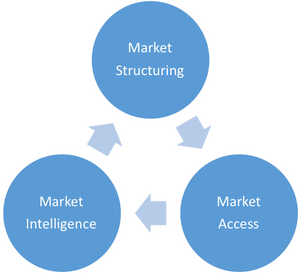The DSO model: The emerging challenges with the DSO role
Blog: Capgemini CTO Blog
The first blog in this series was about how the nature of the UK power industry is changing around us and where DSO will be in the next 5–10 years. In this blog, we will talk about the problems with the DSO role and how can these challenges be addressed.
Working within the current DNO model, the DSO will be required to balance demand and supply in real time while connecting new and varying assets to the distribution network. The current DNO operating model has evolved over many years to support the safe and efficient operation of the distribution networks, but accelerating changes in the power generation mix towards higher volumes of diverse, small-scale, and intermittent distributed energy resources (DER) will place greater strain on this network.
In addition, there will be those who choose to disconnect from the network. Some countries are already seeing large communities of residential, commercial, and industrial customers choosing to migrate to off-grid microgrid solutions, using a connection to the main network as a backup facility. California, for example, has more than 30 microgrids in operation and contains 40% of all residential PV within the US. Germany currently has over 300MWh of residential storage and can cover 60% of peak demand with its PV capacity.
Microgrids are already a fact of life in the mainland UK, with examples such as the Shetland Islands already showing their viability. Our energy landscape is becoming a more balanced portfolio, with 17% of our electricity now generated from bioenergy and waste and 9% from wind, solar, and hydro. A big shift to offshore wind is also underway and this will increase with the renewables auction this autumn.
Some countries are dealing with even greater network disruptors: by 2020 all substations in South Australia are expected to be in reverse flow due the proliferation of DER. Another example of a transformational, emerging technology is the 100MW Tesla battery in South Australia. Taken to its logical conclusion, this creates an inevitable redundancy for some of the distribution assets that the DSO will be paid to own.
There is obvious tension created by the emerging DSO world. The SO function of the DSO must have an emphasis on viewing the whole electricity system/market, ensuring sufficient and appropriate stakeholder access. Under the current proposed DSO model, this function is to be executed by the organizations that own the distribution network (the AO) and are paid to protect its integrity. The possible perception is that the DSO could not operate a level playing field for system connection auctions that might include a combination of demand side management, distributed generation, and storage. These solutions have potential negative effects on the existing distribution network.
Therefore, it is not too controversial to state that keeping the SO role within the same entity as the AO creates a conflict of interest. The AO could exert undue influence over the decision making of the SO to facilitate a neutral market for energy supply. DSOs are likely to continue to earn regulated income for owning and maintaining the electricity distribution networks and may advocate more capacity to be built, then owned. While in some cases this may be the correct solution, it obviously leaves the DSO open to the challenge of operating in its own interests rather than that of the wider stakeholder group. This conflict could undermine the growth of a fully flexible and low-carbon distribution system.
How can this be resolved?
As the system changes, the monopoly DSOs will be forced to adapt. Liberalizing the DSO structure is an important instrument to preserve the public benefit orientation of the distribution network. The system will change to adapt to the new ways the public will choose to interact with it as they segment in their activities and interaction with the network (e.g., selling in, flexibility of use, ability to go green etc.).
The market for balancing supply and demand must allow all parties to participate on a level playing field, otherwise the consumer benefit may be diluted or lost. To best make that happen three conditions must be in place and managed by the facilitator:
| The market facilitator must be free to evolve market operations as the whole system evolves – free from ties to any other interested parties. This will be within the rules set out by the regulator. (Market Structuring) |

|
|
The above image demonstrates that the market facilitator must put the consumer at the center of its decision making, while also balancing environmental, competitive, legal, regulatory, and safety factors – making for a complex mix. The distribution network must therefore involve an element of decision making rather than it being the central factor. The SO role will therefore be separated from the AO role of the DSO as part of the DNO-DSO transition to avoid this perceived conflict of interest. It is a matter of WHEN the market and technological forces drive this separation, not IF.
In the next blog, I will delve into the benefits of SO. In the meanwhile, I would be happy to discuss the DSO model. Feel free to reach out to me via my profile or social media.
Leave a Comment
You must be logged in to post a comment.






